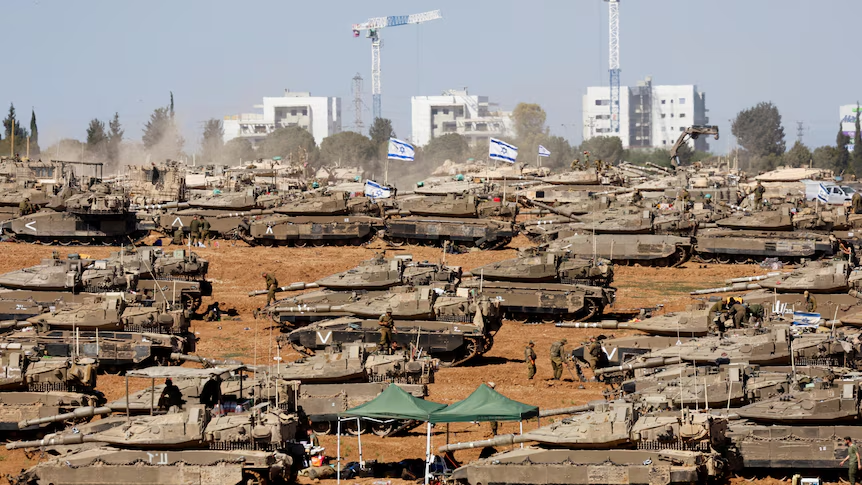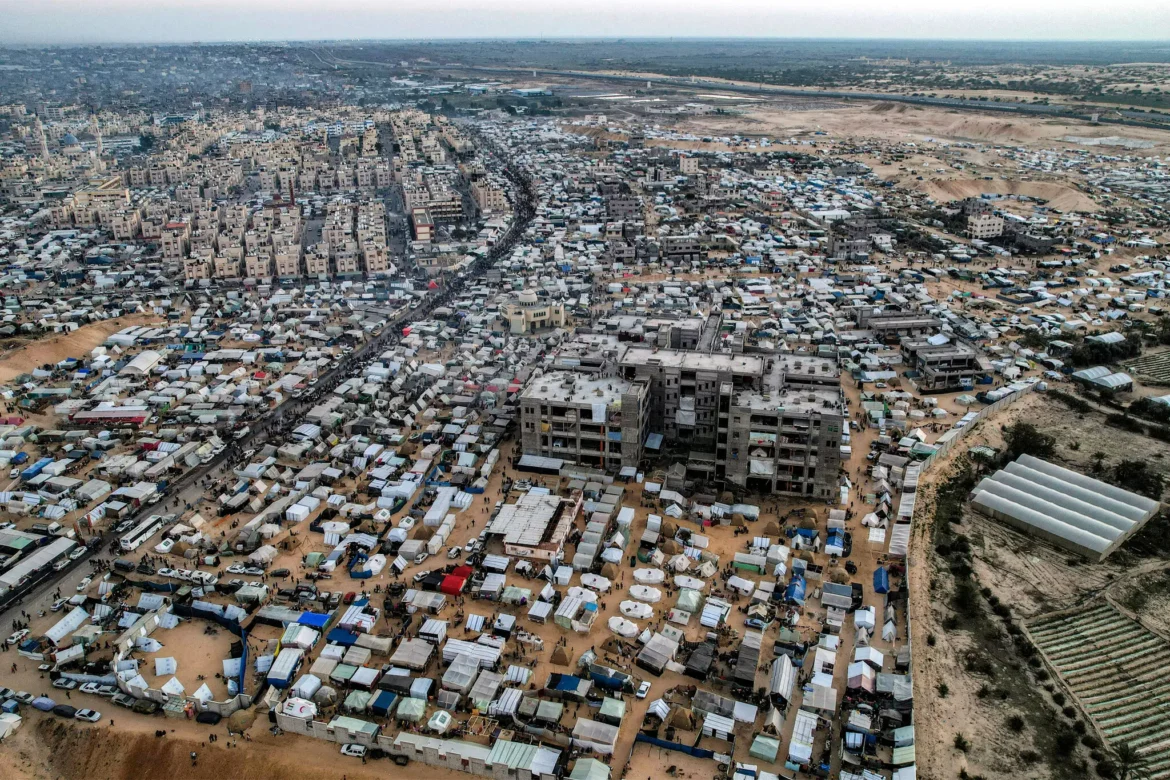Situated at the southernmost tip of the Gaza Strip, bordering Egypt, the city of Rafah is one of the most historically and geopolitically significant towns in the region. Its strategic location has made it a key crossing point between the Gaza Strip and Egypt, a focal point for trade, migration, and, unfortunately, conflict. Despite the challenges it has faced over the years, Rafah remains a city of resilience, with a rich history and a community striving to survive amidst complex political, social, and economic pressures.
Rafah’s story is intertwined with the broader history of Palestine and the Middle East. From its days as an ancient settlement to its modern role as a border city, Rafah reflects the challenges of life in a contested region and the enduring spirit of its residents. For those interested in understanding the dynamics of Gaza and the human stories behind the headlines, Rafah offers a poignant and instructive example.

Historical Background
Rafah has been inhabited for centuries, with archaeological evidence indicating that it was a crossroads for trade and travel in ancient times. Its location on the route connecting Egypt and the Levant made it an important waypoint for caravans and travelers throughout history. The city has been influenced by various empires and rulers, including the Egyptians, Romans, Ottomans, and the British during the Mandate period.
During the 1948 Arab-Israeli War, Rafah became a significant site as thousands of Palestinian refugees fled their homes and settled in the area. The establishment of refugee camps in and around Rafah created a lasting humanitarian and demographic impact, shaping the city’s social structure and contributing to its role as a major population center in the southern Gaza Strip.
Over the decades, Rafah has witnessed numerous conflicts, including wars and military operations that have affected infrastructure, economy, and daily life. Despite these challenges, the city has maintained a vibrant community and continues to serve as a symbol of resilience and survival for its residents.
Geography and Strategic Importance
Rafah is located on the southern border of the Gaza Strip, adjoining the Sinai Peninsula in Egypt. Its position has made it a critical border city, serving as a hub for trade, travel, and smuggling. The Rafah Crossing is the primary gateway between Gaza and Egypt, providing limited access for people and goods, particularly during times of conflict or border closures.
The city is characterized by dense urban areas, refugee camps, and surrounding agricultural land. Despite its relatively small size, Rafah’s strategic location has made it a focal point for regional politics and international attention. Its proximity to both Egypt and Israel has shaped its economic, social, and political life, influencing everything from trade patterns to security measures.
Population and Society
Rafah is home to a diverse and predominantly Palestinian population. A significant portion of the residents are refugees or descendants of refugees from the 1948 Arab-Israeli War. The city’s population density is among the highest in the Gaza Strip, creating unique challenges for housing, infrastructure, and public services.
Family and community networks are central to life in Rafah. Despite limited resources and difficult living conditions, residents maintain strong social bonds, often relying on extended families and neighbors for support. Education and religious institutions play an important role in community cohesion, with schools and mosques serving as focal points for social and cultural life.
The humanitarian situation in Rafah is challenging due to limited access to resources, electricity, and clean water, particularly during periods of conflict or border closures. International organizations often provide aid to support the population, focusing on healthcare, education, and emergency relief.
Economy and Livelihoods
Rafah’s economy has historically been shaped by its border location and agricultural potential. Local residents have relied on small-scale farming, trade, and informal markets to sustain their livelihoods. Olive groves, citrus orchards, and vegetable farms are common in the surrounding areas, although agricultural production has been disrupted by conflict, border restrictions, and land access issues.
Trade through the Rafah Crossing has been critical for the city’s economy. The border allows for the import of goods and materials from Egypt, although it is frequently closed or restricted due to security concerns. Smuggling through tunnels connecting Gaza and Egypt has also played a role in the local economy, providing essential goods to residents when official channels are limited.
Unemployment and poverty are significant challenges, exacerbated by periodic conflicts and restrictions on movement. Despite these difficulties, local businesses, markets, and informal economic activities demonstrate the resourcefulness and resilience of Rafah’s residents.
Rafah During Conflicts
Rafah has been deeply affected by the Israeli-Palestinian conflict, particularly due to its location near the southern border of Gaza. The city has experienced airstrikes, ground incursions, and periods of intense military activity that have damaged infrastructure and disrupted daily life. Schools, hospitals, and residential areas have been impacted, creating a constant need for humanitarian assistance.
During periods of conflict, the Rafah Crossing is both a lifeline and a point of tension. It provides limited access for people seeking medical care, humanitarian aid, or travel, but border closures often isolate the population, compounding hardship. International organizations and local authorities work to provide relief, but conditions remain difficult for many families.
Despite the hardships, Rafah’s residents demonstrate remarkable resilience and solidarity. Community networks, volunteer organizations, and local initiatives help support families and maintain a sense of normalcy amid challenging circumstances.
Cultural and Social Life
Cultural and social life in Rafah is deeply tied to family, religion, and community. Mosques, schools, and community centers are central to daily life, providing spaces for education, worship, and social gatherings. Traditional Palestinian customs, music, and cuisine remain integral to the city’s identity.
Despite the challenges, residents strive to maintain cultural traditions and celebrate significant events, including weddings, religious holidays, and communal gatherings. These cultural practices reinforce community cohesion and provide a sense of stability and identity in an environment marked by uncertainty.
Humanitarian and International Attention
Rafah is often the focus of humanitarian efforts due to its population density and strategic location. International organizations, including the United Nations Relief and Works Agency (UNRWA) and various NGOs, provide assistance in areas such as healthcare, education, food security, and infrastructure. Refugee camps, in particular, rely heavily on international support to meet the basic needs of residents.
Efforts to improve living conditions in Rafah include rebuilding schools, restoring medical facilities, and supporting local economic development. These initiatives aim to alleviate the impact of conflict, border restrictions, and economic hardship, while empowering residents to contribute to their community’s resilience.
Visiting Rafah
Travel to Rafah is heavily restricted due to its location in the Gaza Strip and ongoing security concerns. Access is typically limited to residents, aid workers, journalists, and certain humanitarian organizations. For those interested in understanding the city and its context, research, interviews, and partnerships with international organizations can provide insight into the human stories behind the headlines.
While physical tourism is limited, Rafah’s story can be explored through documentaries, photography, and news reports that highlight its history, culture, and challenges. These resources allow a broader audience to learn about life in a city at the crossroads of history, conflict, and resilience.
Why Rafah Matters
Rafah is more than a border city; it is a symbol of human endurance, community resilience, and the complexity of life in conflict zones. Its strategic location, historical significance, and social fabric make it a unique case study in geopolitics, humanitarian response, and urban survival.
The city’s residents demonstrate the capacity to adapt, maintain cultural traditions, and support one another despite difficult circumstances. Rafah reminds the world of the human dimension behind geopolitical conflicts, emphasizing the importance of understanding, empathy, and international support.
Conclusion
Rafah is a city shaped by its history, geography, and the resilience of its people. From its origins as a trade crossroads to its modern role as a border city in the Gaza Strip, Rafah reflects the enduring challenges and hopes of its residents. While conflict and restrictions have impacted daily life, the community’s determination, cultural richness, and social cohesion shine through.
For those seeking to understand the Gaza Strip beyond headlines, Rafah provides a compelling story of survival, adaptation, and community. It is a reminder of the human spirit’s capacity to endure, even in the most challenging circumstances, and the importance of fostering dialogue, support, and understanding for communities living in conflict zones.

